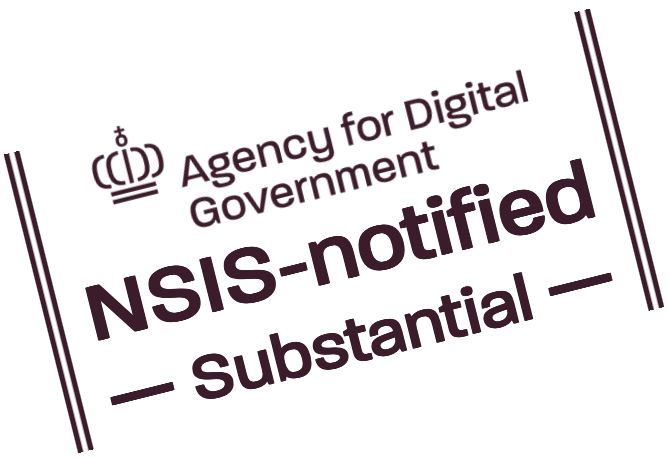- Contact the WAYF Secretariat
- Pricing
- Sponsor statement
- Formal admission
- Attribute Release Profile (‘ARP’)
- Internal web services
- Technical integration
- Little technical support
- Access control lies with the service — not with WAYF
1. Contact the WAYF Secretariat
If you want to offer your users logging in through WAYF (and perhaps eduGAIN) at a web service that you provide, please contact the WAYF Secretariat to get the connection process started.
2. Pricing
Connecting to WAYF and subsequently using WAYF are free of charge for service providers. Any expenses incurred by the technical integration of WAYF login with the service must, however, be payed by the service provider.
3. Sponsor statement
It is an important legal precondition to being allowed to connect a service to WAYF that it is documented to the WAYF Secretariat that at least one of those institutions connected to WAYF wants to be able to offer its users access to the commercial service through WAYF. If the service provider is already connected to WAYF as an institution (e.g., a university), no explicit documentation of this kind is required. But otherwise, the service provider must see to it that a connected institution sends a "sponsor statement" to the WAYF Secretariat. There are no formal requirements on this statement; it may simply be a brief e-mail.
4. Formal admission
Once the sponsor statement is in place, the service provider must know the terms of participation (in Danish), and supply the following material to the WAYF Secretariat:
- the official name of the service;
- the official name of the service provider;
- the service provider's logotype;
- a brief description of the service.
The service provider is also obliged to name at least one contact person and forward: name, e-mail address, and phone number for each contact. Changes to the information supplied must be reported to the WAYF Secretariat without undue delay.
5. Attribute Release Profile/Policy (‘ARP’)
Whenever a user attempts to log into a web service through WAYF, WAYF transfers from his institution a certain amount of data about him to the service. It follows from personal data protection law that only the minimum of information may be transferred that is required for the service provider to be able to deliver his service to its intended consumers. The required amount of user information — the Attribute Release Profile for the service — is negotiated between the service provider and WAYF. The elements of user information — so-called attributes — that WAYF is able to deliver are enumerated here. Please note that WAYF is unable to guarantee the availability of any attribute not marked ‘MUST‘.
6. Internal services
When an institution provides a service for the exclusive use by its own users, we are dealing with an internal service; and such a service can be connected to WAYF without further ado. WAYF enforces, technically, that only users from the providing institution can access the service (though it remains the responsibility of the institution to make sure that only entitled users are granted access). Each institution can have an indefinite number of internal services connected to WAYF — and so use WAYF as an internal single sign-on system.
7. Technical integration
The technical integration consists of: implementing a SAML SP on the web service and then: exchanging metadata (i.e., configuration data) with WAYF.
The SAML SP is a service which is able to communicate with WAYF's server through the login protocol SAML2, and must comply with the SAML 2.0 Interoperability Deployment Profile. An array of different products are on in the market for implementing a SAML SP, both commercial (e.g., Microsoft's ADFS) and open-source (e.g., SimpleSAMLphp, Shibboleth, OIOSAML). Moreover, special SAML2 modules exist for a range of CMSs (e.g., WordPress, Drupal). A PHP minimum SAML2 SP implementation can be studied here. A collection of SAML2 tools for a number of different programming languages and CMSs is found here.
Please note that your server must support HTTPS. Furthermore, your SAML2 SP must be able to send login requests to WAYF in a 302 reply to the user's browser, and be able to receive login responses from WAYF in a HTTP POST from the browser. Your SP never communicates directly with WAYF, only with the user's browser.
Once the web service has implemented the SAML2 interface, the service provider and WAYF must exchange metadata: essentially information on where their servers can find each other on the internet, and how exactly they may communicate with one another. Metadata about WAYF's servers are found here and must be consumed by the SAML2 SP of the service. Metadata about the latter must be sent to the WAYF Secretariat initially and can later be edited through a web interface to WAYF's metadata registry, mEdit. At a minimum, WAYF needs to know your SP's entityID (or client-id) and the URL to which the browser may POST login responses; further settings can be agreed on as needed.
In the standard version of WAYF, WAYF asks the user to select his login institution from a list. However, as a service provider you also have the option to have the user select his login institution directly at the service's own site. This is attractive if you want to limit the user's choice to including customer institutions only. An available technology, then, is scoping – alternatively, you can connect each institution individually through WAYF. WAYF's own institution list (‘discovery list’), however, can also be programmed to display just the institutions of relevance to your particular service.
Note that WAYF now also offers, to some extent, connecting services through the protocols WS Federation (Passive Requester) and OIDC (only the flavour id_token with form_post). Services using Apache as their webserver can receive a simple OIDC integration with WAYF through the module mod_auth_openidc.
8. Little technical support
The WAYF Secretariat will not keep its knowledge to itself in cases where we might be able to help – but in principle offers no technical support for the service provider's efforts to implement WAYF login at his online service. We support the SAML2 interface (or, cf. the above, WS Federation or OIDC), but other than that, we do not relate to specific implementations of SAML2 at the service provider's, including how to configure SAML2 software that we might mention on this site. If one is not capable of the integration oneself, a SAML2 knowledgable consultant must be hired.
9. Access control lies with the service — not with WAYF
It is important to remember that all access control is performed at the web service: Whenever WAYF's server sends a login response to the service, that per se does not imply that the user in question must be granted access to the service. Rather, the login response contains the information on the user agreed on; and it is the responsibility of the service provider to implement at filter that will check if the attribute values received entitle the user to access. It is a serious misunderstanding, and a potentially business critical one, if the service provider believes that merely receiving a login response at all from WAYF's server entitles the corresponding user to access. In like manner, the service provider is responsible for verifying that login responses received have actually been issued by WAYF — by testing the XML signature of the Assertion element of the response.

